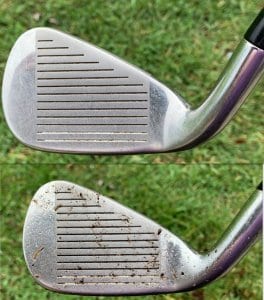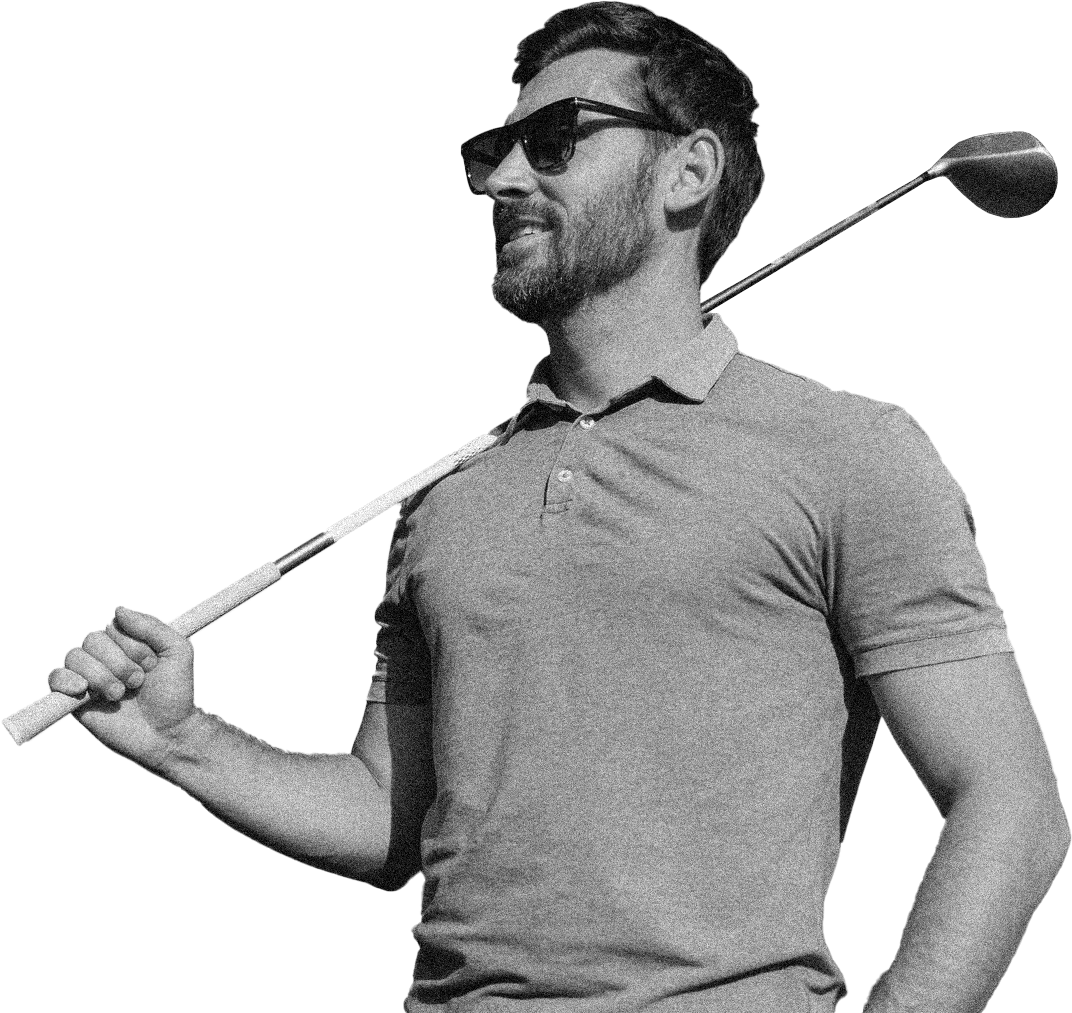I have a favorite piece of advice for my clients who are constantly beating themselves up over not having a “perfect” golf swing. I am normally dishing this phrase out when on an Orlando Golf Course. What is the advice? “A great decision, followed by a great setup for that decision, will always camouflage poor golf performance.”
Most of my clients look at me puzzled when I say this. Mainly because they don’t know what it means to camouflage a poor golf performance. They’re not aware that sometimes poor golf swings can actually produce good results. Or what I call a “good miss.”
Golfers are always trying very hard to make a perfect golf swing. Their efforts never take into consideration that being perfect is hard, if not impossible to achieve at anything. In addition, the time they can commit to skill development and improvement is limited by the other priorities within their lives. And as humans, we’re prone to make mistakes. We’re not perfect.
Let’s dive into the topic of hiding or camouflaging your poor golf swings or performances. It consists of the 2 elements within my advice you have direct control of before every executing a golf swing. Let’s make a great decision. Then set up for that decision.
It Starts with a Great Decision
Most of the mistakes I see golfers make, regardless of skill level, starts with a decision that could not, will not, and did not match the golfer’s skill level or physical abilities.
Whether it’s choosing a different golf club. Or determining a safer place to aim. Or taking all variables into consideration. The decisions you make before every shot are the genesis of your inconsistencies. Great decisions take into consideration every variable and factor that can influence the outcome of a “perfect” shot or golf swing. The information you process to make your final shot decision determines the margin of error you’re willing to accept for the shot you choose. And the margin of error you choose can either greatly enhance or reduce your ability to post a score worthy of your golf swing’s potential.
Around the world, too many golfers make too many poor decisions daily. And its golfers who continue to make poor decisions that continue to come to golf schools Orlando.
Starting a Great Decision Process
The process of making a great decision starts by understanding exactly who you are as a golfer. And what you golf swing has the potential to produce. Not what you wished it produced.
Do you know how far each club will carry? How are you feeling today? Are you an experienced golfer or a beginner golfer? Are you capable of making fast or slow swings? Does your fitness level limit your ability to efficiently swing a golf club? Did you scout the golf course before playing it? What is your swing path tendency? These questions and more comprise the preparation phase of making a great decision.
Think about it. How many decisions do you make without information? Or without preparing to make the decision? And how many unprepared decisions have you made that actually worked in your favor? On and off the golf course.
You also make great decisions by understanding the conditions you’re playing in right now. Not the conditions you hope for. And not the perfect conditions you practice in. Did you scout the golf course before playing it? Are you playing a fun round or a competitive round? What are the conditions the ball lies in right now? Understanding current conditions and the variables associated with those conditions is needed to have a chance or making a great decision.
Not All Great Decisions are Created Equal
Because of conditions and because of how you might feel one day to another, no decision you ever make on the golf course is going to be identical to a previous decision. Or a decision in the future.
You can certainly catalogue the decisions you make on the course into general categories. An example would be approach shots from approximately the same yardage you’re facing now. How is this situation different from the others you’ve experienced? You can go back and relive similar situations and use what you’ve learned to assist with making a great decision now. You’ve learned something positive from previous experiences. Or learned from the mistakes you made. Either way, decisions of the past are an accumulation of your experience and knowledge. Information you should always use to your advantage to make a great decision now.
What is Included within a Great Golf Swing Decision?
Besides the obvious, a great golf decision also includes all the variables you’re considering over every shot. Club selection, ball position, balance, aim and alignment, are the simplistic and obvious variables you face with every shot. But other variables come into play based upon where the ball lies. As well as the situation you currently face within your round.
Where are You? Within Your Round of Golf
Are you at the beginning of your round or playing the last hole? Are you on a hole that fits your eye or playing a hole you can’t stand? Or are you playing a stretch of three holes that makes par a great score?
Wherever you stand in your round, you’ll be faced with determining whether or not to be aggressive. You can’t win a tournament or shoot a career low round playing the 1st hole. But you certainly can blow the round up and lose a tournament on the 1st hole. But if you’re on the last hole needing a birdie, it’s obvious that the variables you face now can determine the measurement of your success.
Wherever you are within your round will influence the decisions you make. Are you prepared to play more aggressively if the situation calls for it? And if so, are you prepared to make a great decision that minimizes the risk of an aggressive decision?
Great Decisions can Lead to Great Set-Up if You Follow the Details
Knowing the conditions you’re playing in as well as the circumstances you’re playing for directly influences the decisions you make. And in turn, directly influence your ability to properly and correctly set up to any golf shot. And like decisions, not all great setup positions are built alike.
Take for instance a simple 150 yard shot with your 7-iron. If the wind is with you, would you change the setup of your ball position versus if the wind was against you? And if the wind was against you, would you be altering the setup of your hand position on the club? But what if a simple 150-yard shot was a little more complicated than that? Such as having a downhill or side hill lie. How would that affect the balance of your setup? And would that alter your aim points at all as you set up to the ball?
The variations you deal with in making a great decision are the same variations that must be considered as you set up. And dealing with one variable at a time can make the difference between making a good golf swing or a very bad one.
Check out how John uses this exact phrase to hit a great shot to #9 at Streamsong Resort’s Black Course
Variations off a Standard
I ask all my clients to standardize their golf swing setup. And their pre-shot routines. Why? Because it’s easier to understand the variations to a standard versus haphazardly applying variations to something that’s not standardized.
Think of a recipe for baking bread. How can multiple finished loaves turn out tasting and looking the same each time you bake bread if the recipe is not standardized? What if you’re trying to change the flavor or texture of the bread? Doing so will take into consideration one variable at a time, based upon the standard recipe. It takes just once variation of the standard recipe to change the outcome or taste of the next loaf you bake. A golf swing is no different.
I’m going to borrow a classical music phrase, “a variation on a theme”. Great setup is just a theme. Variations off of a standard setup theme allows you to be the best athlete possible. Therefore, a great decision must take precedence over the setup position. If it’s the opposite, the outcome of your shots will always be dependent upon the luck you experience setting up totally unprepared or uneducated.
Camouflaging a Poor Golf Swing Performance
To improve as a golfer, you must wrap your arms around the fact that most of the shots you hit in any given round are not perfect. Therefore, you’re actually attempting to hit as many consecutive shots as possible that are predictable to your tendencies of missed shots. Great golf swing misses make for great golf rounds.
Camouflaging comes in many forms. But most of the cover up work is already taken care of prior to swinging the golf club. How? By making a great decision about the shot your about to hit. Then setting up to your decision, to the smallest detail. This allows you the freedom to commit and execute any golf shot.
Tip Your Hat to the Golf Swing “Miss”
But there is another way to camouflage a poor golf swing performance.
The next time you see a touring professional tip their hat after hitting what looks to be a miraculous shot, with a fantastic looking golf swing, ask yourself a couple questions. Was that the shot the professional was trying to hit? Or was that such a great miss that you didn’t know any better?
Part of camouflaging a poor golf performance is accepting the compliments of your playing partners or competitors. Even when you believe you did not deserve the compliments. As well as keeping your dissatisfaction of your performance to yourself. If your playing partners or fellow competitors compliment you for the great shot you just hit, accept the compliment! They can’t tell the difference which is why you received the compliment. And they were not part of your decision or set up prior to making the golf swing. They just witnessed you making every effort possible to hit the best golf shot possible. I their eyes, you did exactly that.
Regardless of your skill level, those witnessing your round will perceive you as a golfer by the decisions you make and how you go about your business to make those decisions happen. The people playing with you are not inside your head, and therefore can’t know what you’re attempting to do. All they see is the opportunity created by the outcome of your “not perfect” golf swing. You deserve the compliment because the people watching you did not know any better.
By the way, no one likes a complainer The complaints you deliver to yourself about the missed shot you just executed, overheard by the people playing with you, blows your cover. And all the hard work you put into the decision and set up of the shot. Keep complaining and the compliments go away, even for the great missed shots you hit.
Conclusion
Making great decisions is paramount within any endeavor. Whether golf, business, or personal, great decisions are what separates the good player from the average player. But golf requires you to set up to that great decision. Setting up to the decision is what separates the great player from the good player.
Leaving out a detail as you make a golf swing decision has a snowball effect upon the rest of the shot, particularly your set up position. Leaving a set up detail out of the decision-making process is disastrous. And if everything goes as planned based on your decision and setup, the odds of you pulling off any shot are greatly increased in your favor. Why? Because the decisions and the setup camouflage any imperfections in your physical abilities to perform any golf swing.
Decisions and setup allow your physical abilities to work at their most efficient. It’s the efficiency of your golf swings, not the outcomes, that matter most. Allow yourself some time to make a great decision. And set up to that decision. In turn, others will always deem your poor golf shots as good or great golf shots. And as you tip your hat in acceptance of the compliments, realize you just camouflage a poor performance.
Come visit me and my staff and experience golf schools Orlando that will assist you with making great decisions and setting up properly to your decisions, so you too can camouflage your poor golf swing performances.






